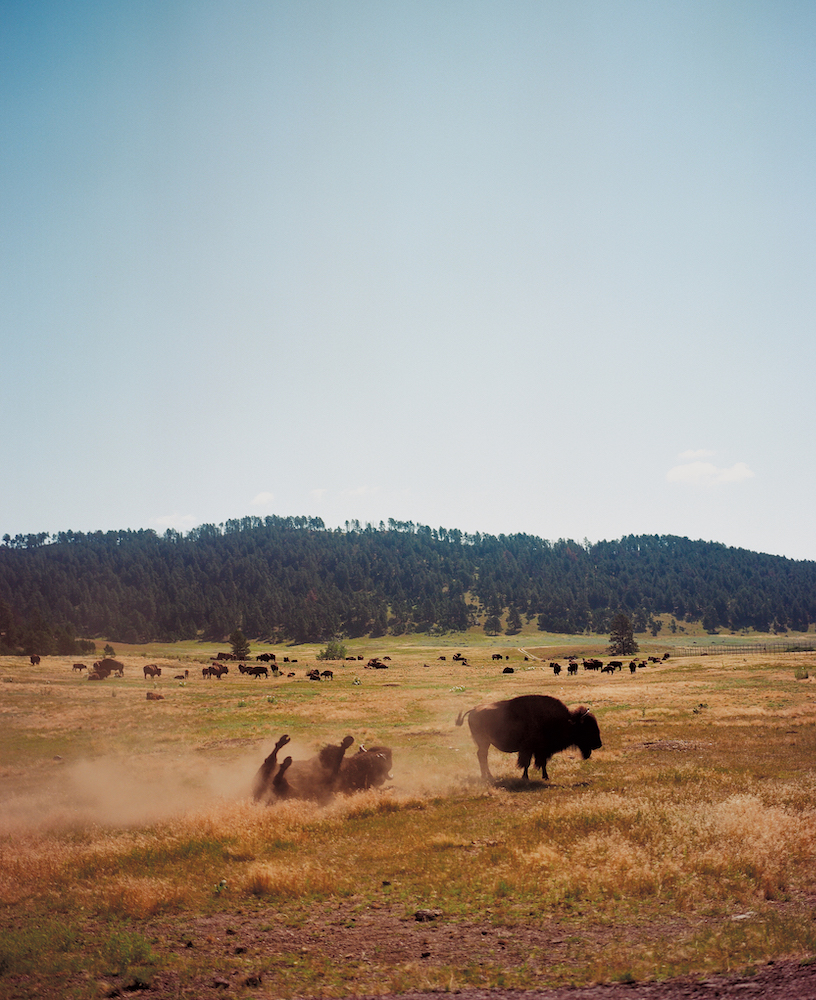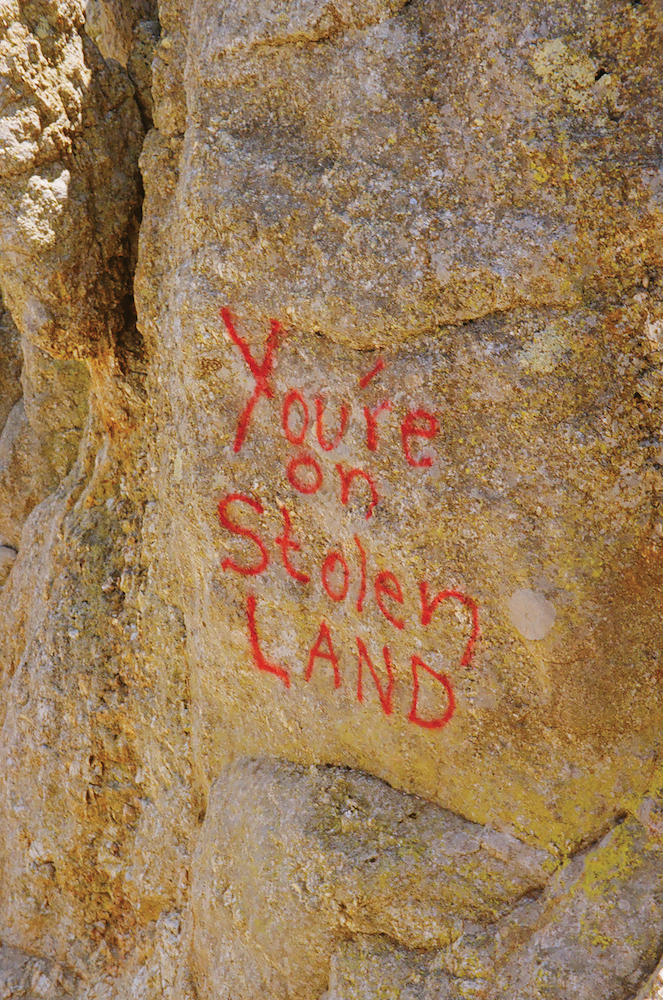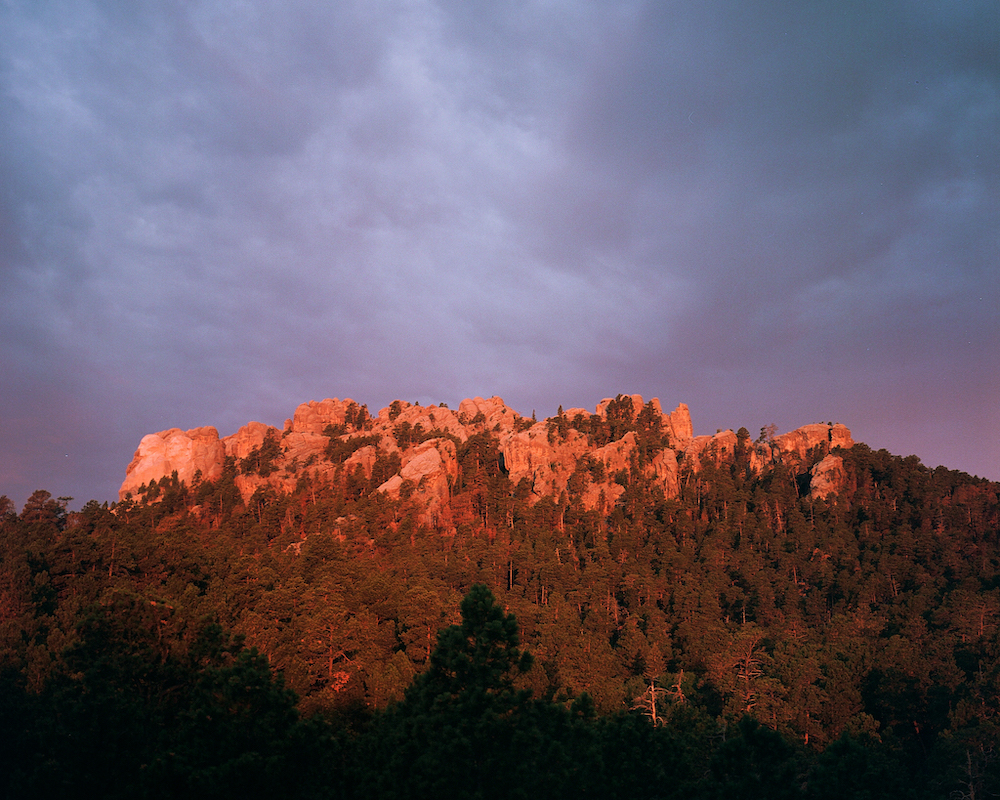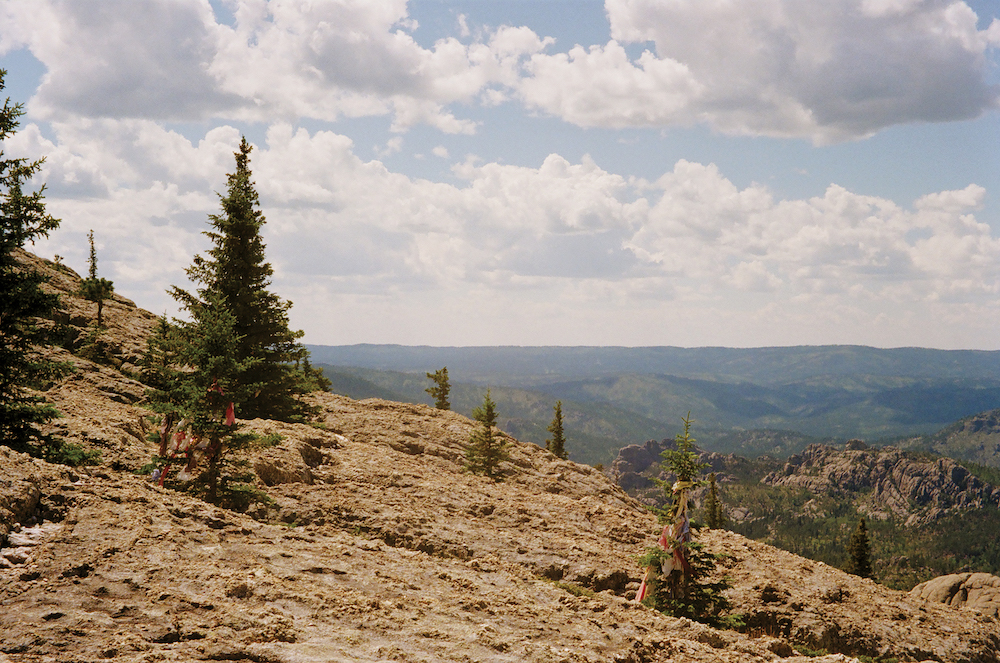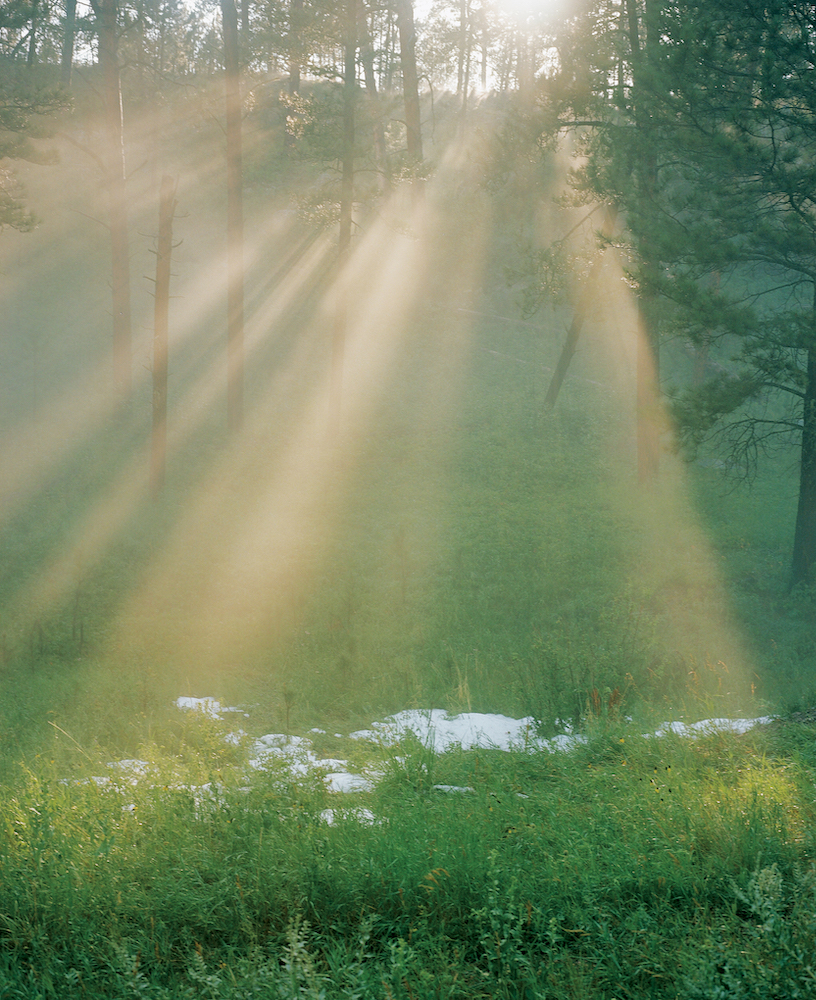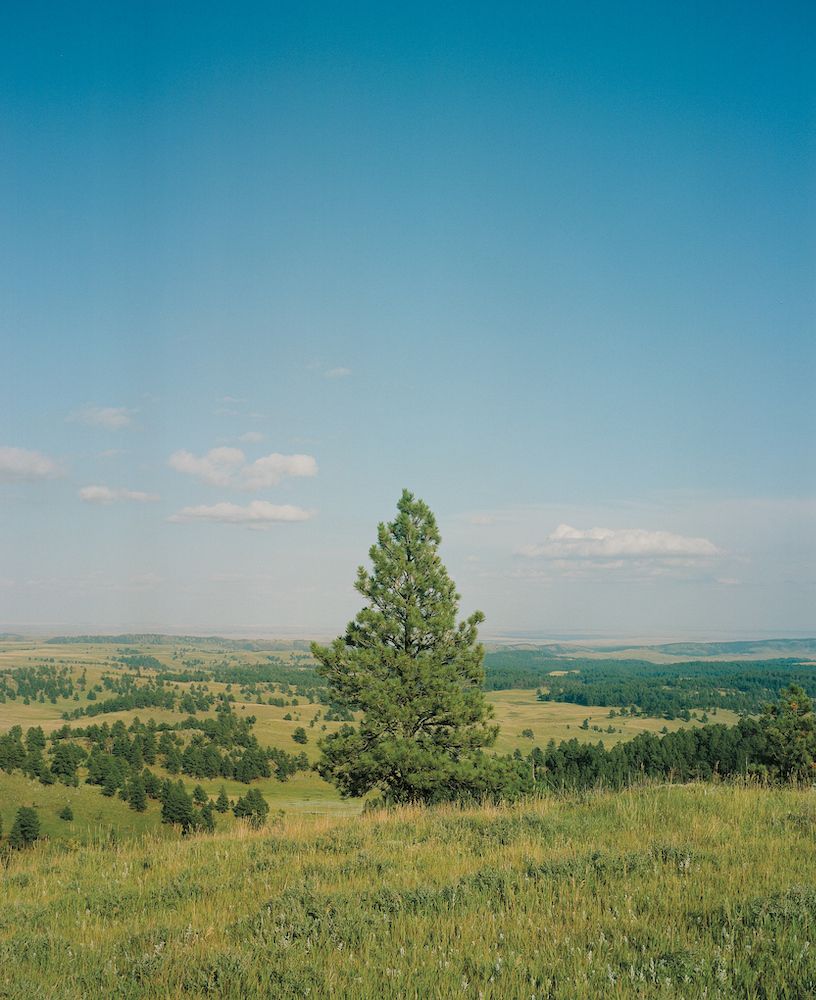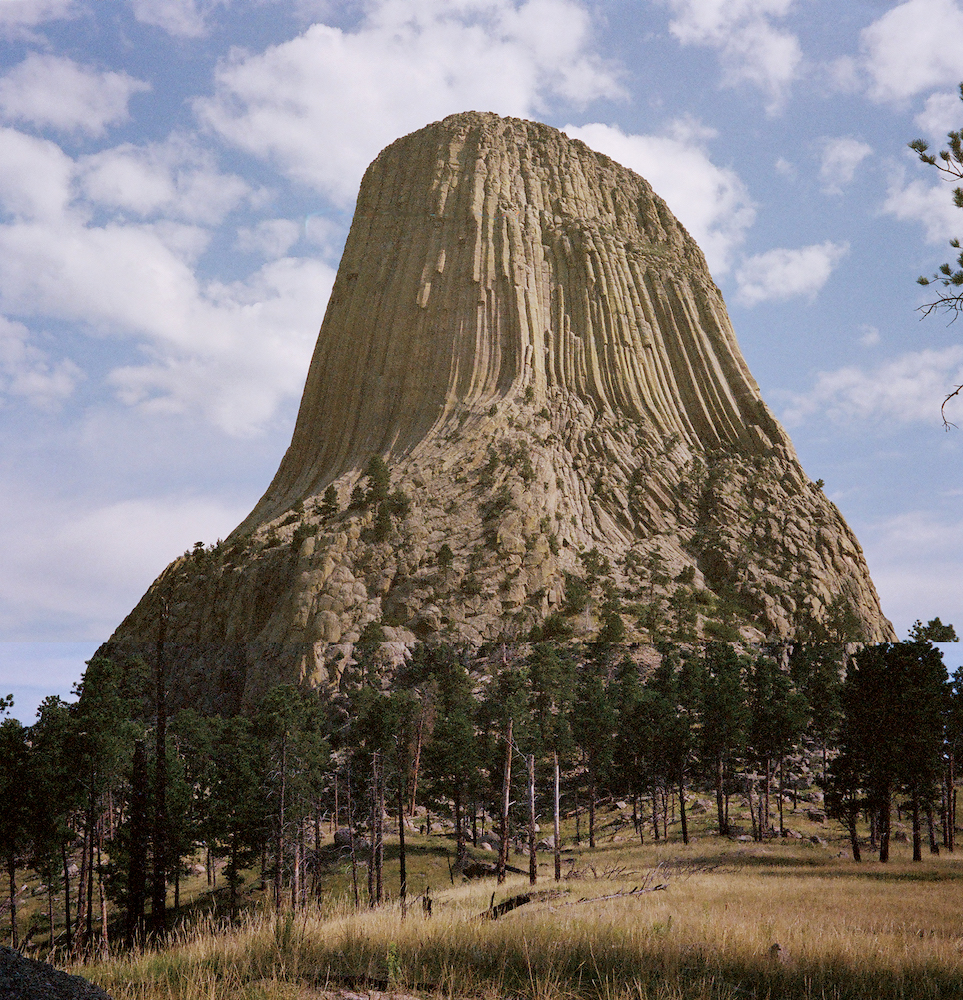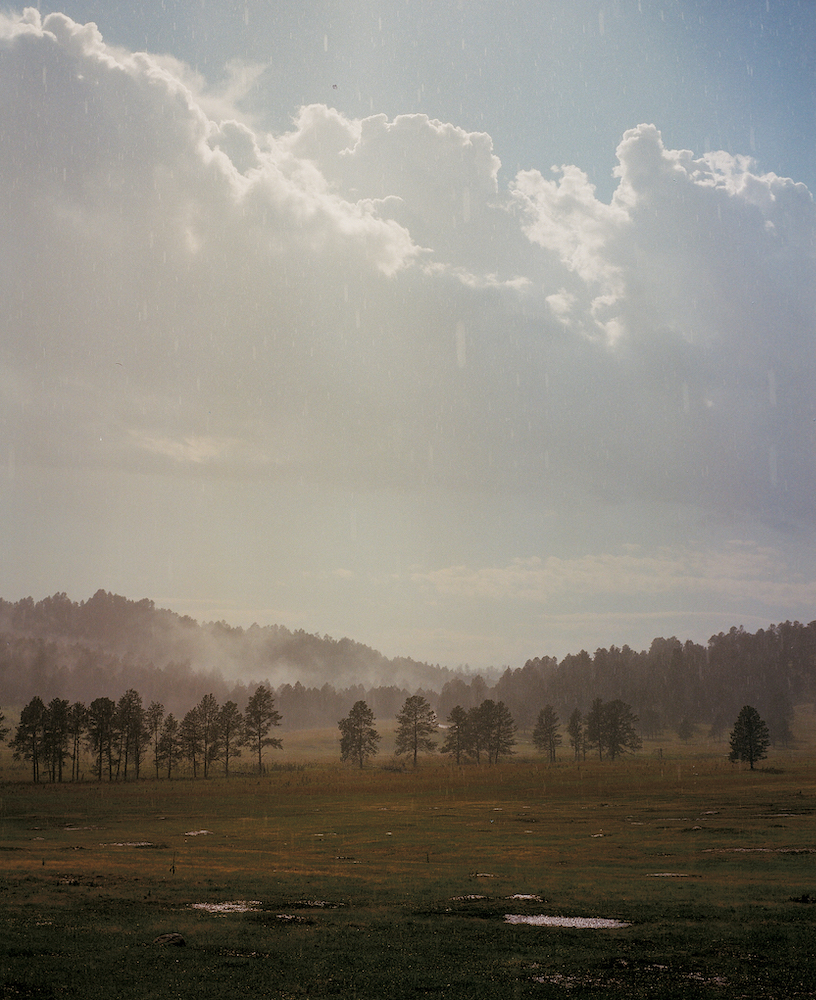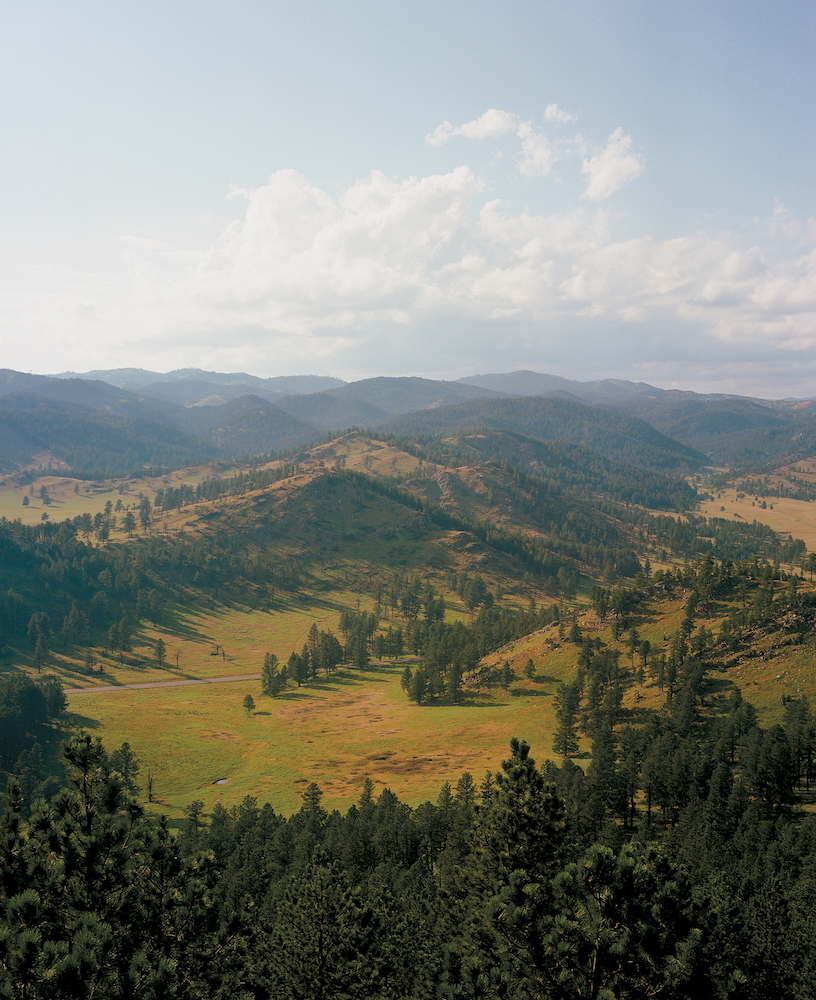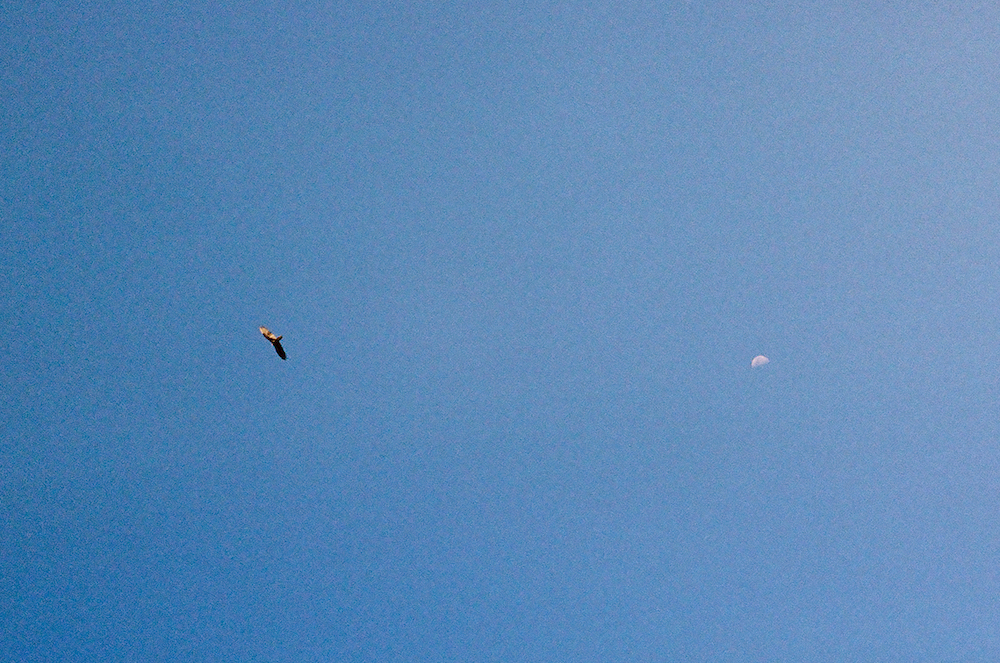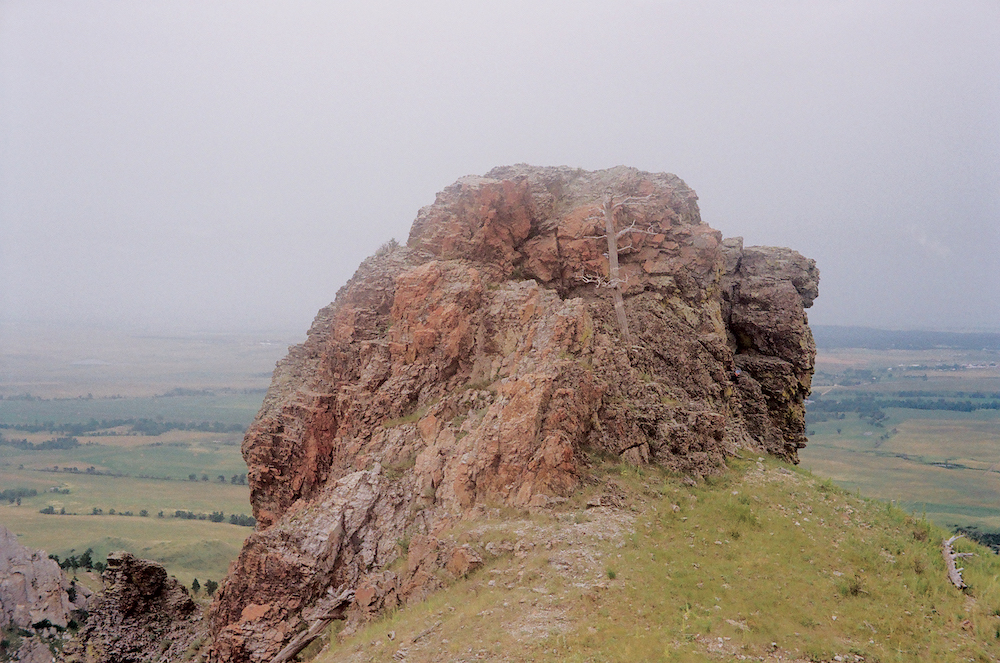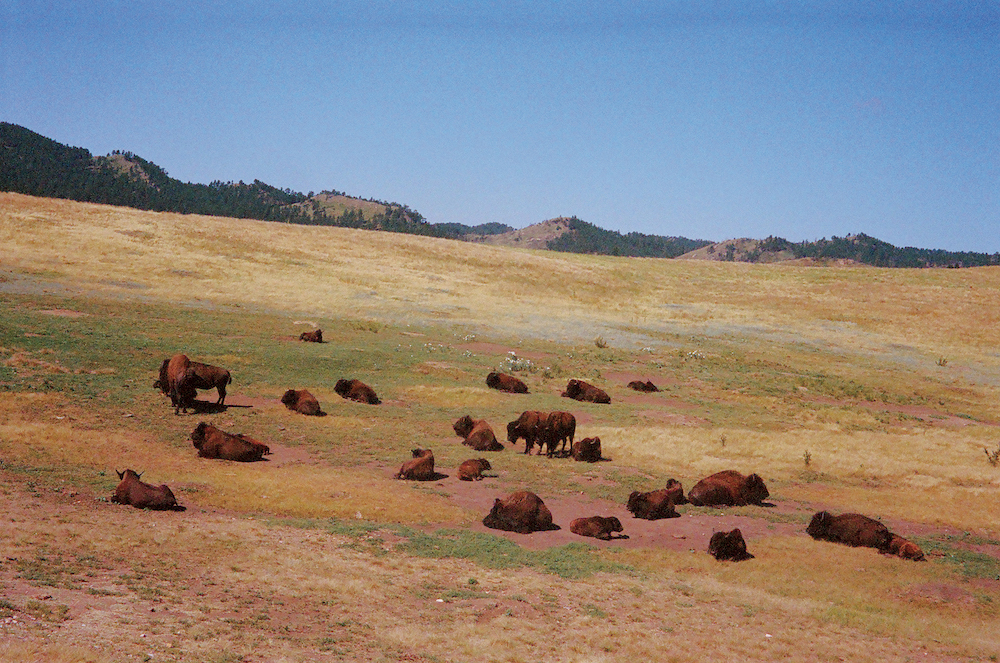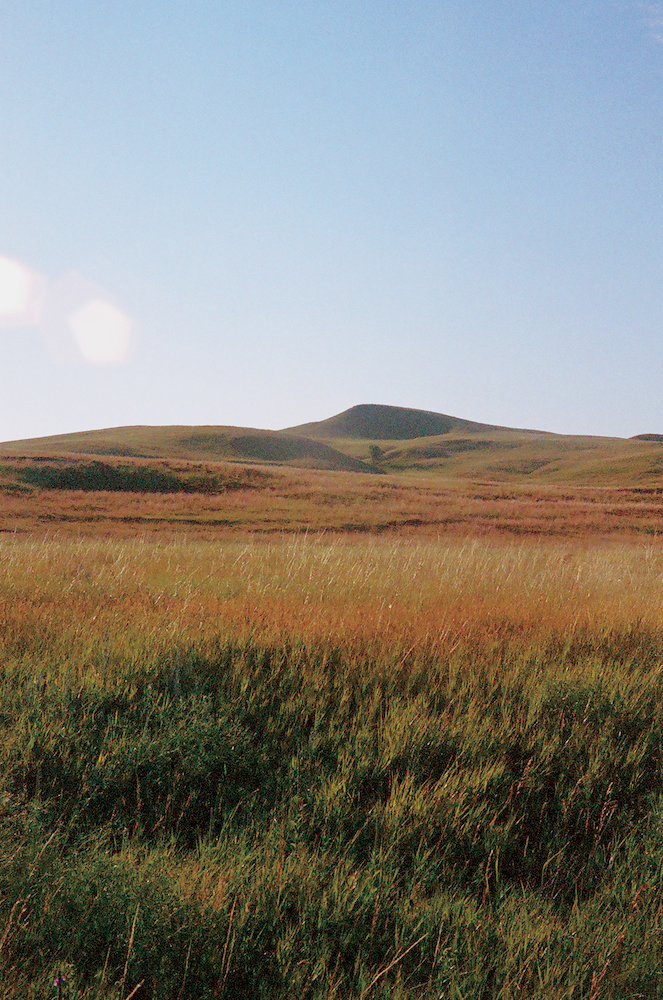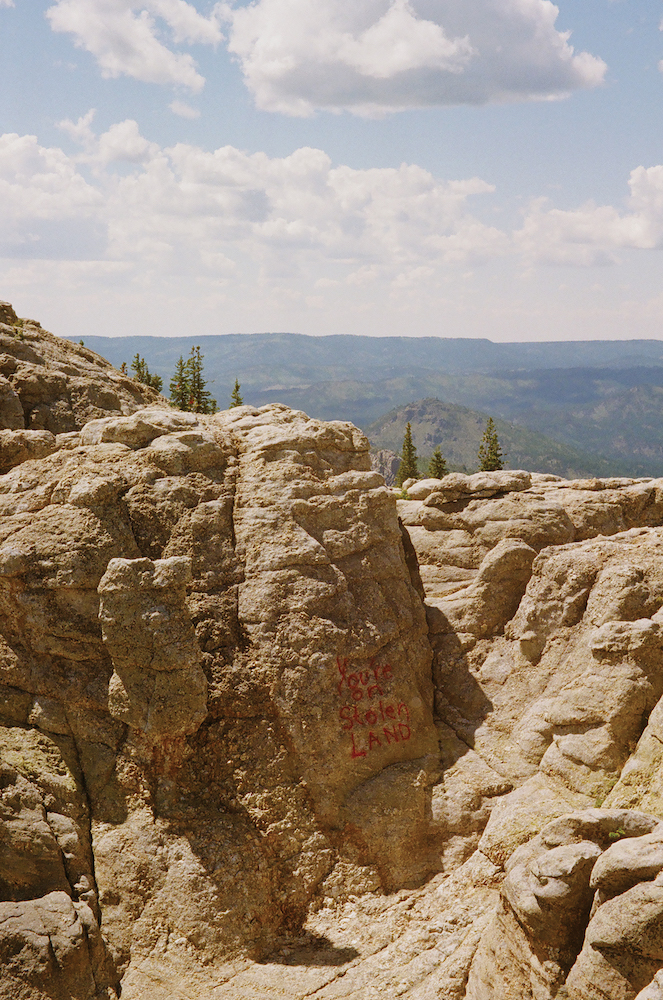Evan Benally Atwood: Black Hills
This week, we will be exploring projects inspired by place. Today, we’ll be looking at Evan Benally Atwood’s series Black Hills.
I was first introduced to Evan Benally Atwood’s work through Atmos, a magazine focused on climate and culture. Their images accompanied an article about indigenous land and the inherent ancestral pull they have. Being a South Dakota local, it was extraordinary to see a new perspective on the land. Evan’s series black hills explore Apsáalooke, Cheyenne, and Očeti Šakówin land. Usually, we see these images as tourist attractions on friends’ Instagram accounts. Evan’s photography shows the quiet beauty of the land through an indigenous lens. Their use of color film accentuates the natural warmth of these spaces. In the place I called home, they juxtapose the two extremes of purity culture and how they often exist within the same expanses. Evan explores the roots of American traditions in their photography.
Evan Benally Atwood is a queer Diné creative using filmmaking and photography to document stories, uplift community, and empower their community. From film to digital, they thoughtfully craft each project from idea to final creation.
Follow Evan on Instagram at: @evanbenallyatwood
Black Hills
an adventure east for Atmos Magazine to document the Black Hills; in these 35mm and 120mm film stills, there’s:
- Bear Lodge
- the Six Grandfathers
- Black Elks Peak
- Bear Butte
- Wind Cave
…then I stayed in the badlands before coming home.
FROM ‘The Ties That Bind’
Ruth H. Hopkins states “sacred sites are Indigenous places of worship, our outdoor cathedrals. In the modern era, they have been consistently targeted for destruction by racist demagogues, extractive industries, and those who are otherwise estranged from their spiritual selves and see only dollar signs.”
All taken on the ancestral lands of the Apaalooké, the Cheyenne, and Očeti Šakówin.
Epiphany Knedler: How did your project come about?
Evan Benally Atwood: Usually happenstance, ending up in the right place at the right time, with the right people to make it happen. I also enjoy maintaining relationships with whom I create with; for example, working with Black Belt Eagle Scout, KP, over the years has been such a blessing to create collaboratively together. The sacred lands of the Black Hills came about through Atmos Magazine, who are still doing wonderful work.
EK: What relationship does place or location play within your practice?
EBA: Knowing the history of the land is essential, native.land.ca offers a great starting point to learning more about the history. Within the Black Hills project for Atmos Magazine, I set out on a camping road trip with film in my pack. I set out my intention to take as long as I needed and to trust the gut when it was time to leave. I knew I wanted to document the magic of these places to be paired alongside Ruth H Robertson’s words, “Awareness regarding the relatedness of all things—from subatomic particles and blackholes to inyan (grandfather stone), the wakinyan (thunder beings), giant redwoods, or you and me—is also key to providing one with a healthy, life-affirming perspective on ancestry and legacy, and our purpose as torchbearers within our lineages.” and be as impactful as possible.” Knowing the history of the land we live on is the first step toward making collective action.
EK: As a queer indigenous artist, what role does your identity play in your practice?
EBA: What I’ve found for the projects I’ve specifically done, surrounding Two Spirit, Indigiqueer folks is that it matters who is behind the camera, perhaps more than we realize. The history of photography shows us how others see us, while when it’s a queer Indigenous photographer or filmmaker, it’s how we see ourselves. It’s important to me to be proudly queer, to know that many languages have words for these naturally queer lives found in nature, it makes me stronger to know that I can’t be denied this truth. To be queer in nature and taking self portraits is empowering and brings me joy. I hope this inspires others to feel free to be queer and held in nature.
EK: What’s next for you?
EBA: Continuing to follow the flow, applying for grants to make narrative dream projects come to life and continue to create and be the queer Indigenous person I want to see succeed in the world.
Epiphany Knedler is an imagemaker sharing stories of American life. Using Midwestern aesthetics, she creates images and installations exploring histories. She is based in Aberdeen, South Dakota serving as a Lecturer of Art and freelance writer. Her work has been exhibited with Lenscratch, Dek Unu Arts, F-Stop Magazine, and Photolucida Critical Mass. She is the co-founder of MidwestNice Art.
Follow Epiphany Knedler on Instagram: @epiphanysk
Posts on Lenscratch may not be reproduced without the permission of the Lenscratch staff and the photographer.
Recommended
-
Earth Week: Aaron Huey: Wallpaper for the End of the WorldApril 26th, 2024
-
Earth Week: Casey Lance Brown: KudzillaApril 25th, 2024
-
Tara Sellios: Ask Now the BeastsApril 6th, 2024
-
ALEXIS MARTINO: The Collapsing Panorama April 4th, 2024
-
Emilio Rojas: On Gloria Anzaldúa’s Borderlands: The New MestizaMarch 30th, 2024

